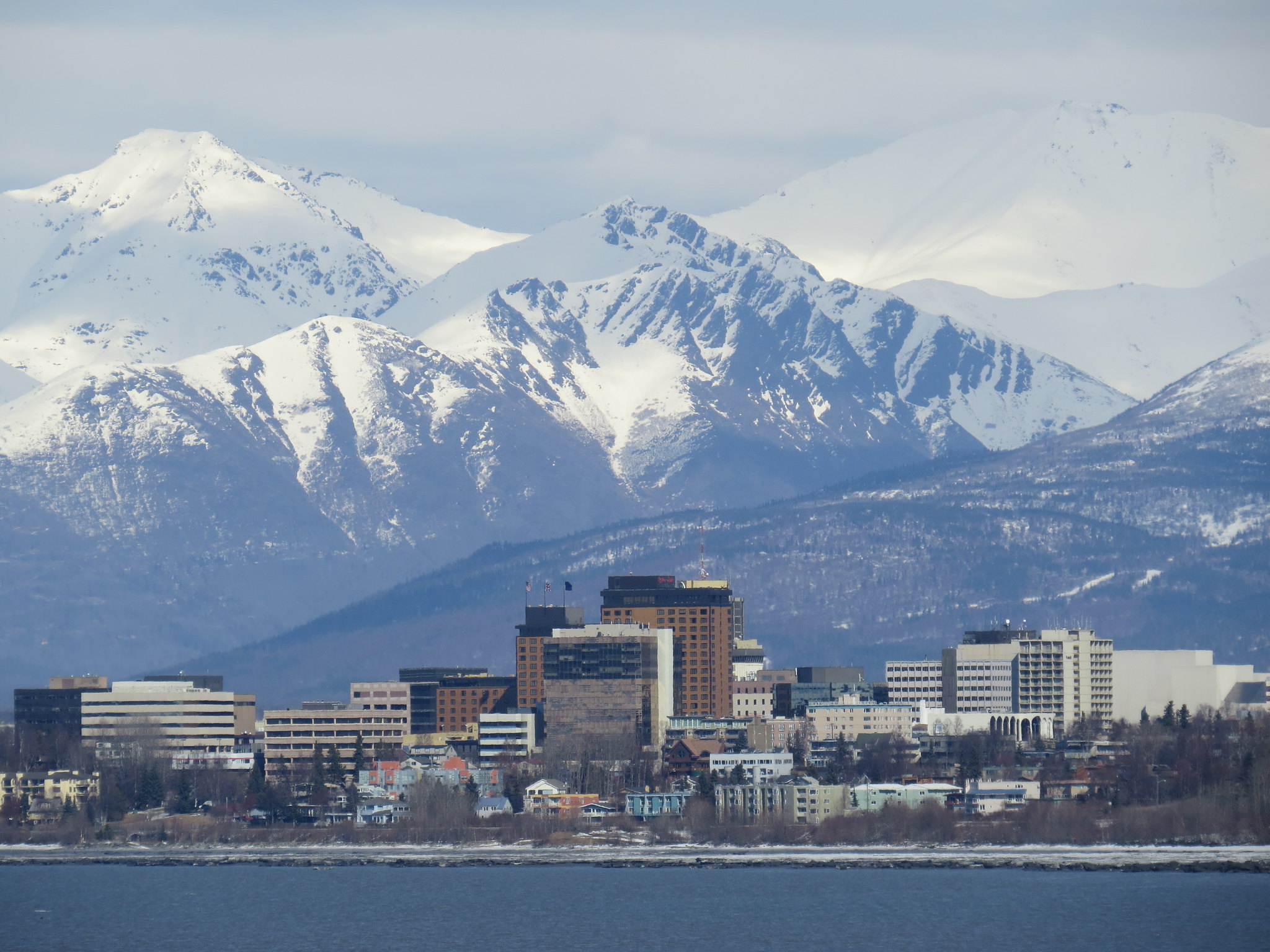Alaska’s biggest city adopts a climate change plan to cope with effects of warming
Anchorage wants to make the city and its residents less vulnerable to the effects of rising temperatures.

The Trump administration has largely abandoned work to combat climate change at the federal government level, and Alaska Gov. Mike Dunleavy, sworn into office in December, has discarded the climate strategy and action plan developed at the direction of his predecessor.
Now Alaska’s largest city has stepped into the climate-action void.
Anchorage, home to about 300,000 people and about 40 percent of the state’s population, on May 21 formally adopted a climate-change action plan and strategy with a 10-2 vote by the municipal assembly.
While much attention has been devoted to climate change in more rural parts of Alaska, which are threatened by permafrost thaw, erosion, loss of ice and other forces, the warming climate creates problems in the state’s urban center, too.
“It changes the nature of living here in the North and we’re susceptible to more things than we were in the past.” Mayor Ethan Berkowitz said in a May 8 presentation to the U.S. Arctic Research Commission.
Average annual temperatures in the city have risen more than 4 degrees Fahrenheit (2.2 degrees Celsius) since the mid-1950s, and average winter temperatures rose 6.7 degrees Fahrenheit during that period, noted the plan, which relies on information from the National Oceanic and Atmospheric Administration’s Regional Climate Centers. Temperatures are expected to keep rising, with another 4- to 5-degree Fahrenheit annual increase expected by 2040, the plan notes, citing information from the University of Alaska Fairbanks’ Scenarios Network for Alaska and Arctic Planning.
That means more risk of urban wildfires, more freeze-thaw cycles that make roads dangerous and increase maintenance costs, more flooding and erosion, more respiratory health problems from increased pollen production, wildfire smoke and other particulates, more exposure to disease pathogens moving up from the south and health problems with pollen and other problems, according to the climate plan.
It also means a heavy economic toll, the plan warns. It cites a 2017 study published in the Proceedings of the National Academy of Sciences that found that absent adaptation, climate change is projected to impose up to $5.5 billion in cumulative damages to Alaska public infrastructure. “This burden will be heavily shouldered by the Municipality of Anchorage, which serves as the commercial hub of the state,” the plan document says.
[Newtok poised to be relocation model for climate-imperiled villages]
The Anchorage climate action plan sets carbon-emissions goals: an 80 percent reduction, compared with 2008 levels, by 2050 and a 40 percent reduction by 2030. Forty-six percent of Anchorage’s current emissions come from buildings and industry and 42 percent come from transportation, so the plan outlines steps to conserve energy and shift to renewable energy through urban planning and zoning and management changes. Some steps have already been taken and are underway, such as installation of solar panels on municipal buildings and the start of network of charging stations for electric-powered vehicles.
Anchorage’s municipal government, though it accounts for only 4 percent of the city’s total energy use, can achieve cost savings using the same practices that will reduce carbon emissions, Berkowitz said in his presentation to the U.S. Arctic Research Commission. For example, the city has installed energy-saving LED lights, saving at least $800,000 a year, “or you can look at it alternatively, that’s five or six cops,” he said. Last year, in a test, the city ran an electric-powered bus that got the equivalent of 13 to 14 miles per gallon (5.5-6 km/l), compared with the usual 3 to 4 miles per gallon achieved by traditional diesel-powered city buses, he said.
There is a section in the plan on food, including steps to encourage community gardens and more local sourcing. Anchorage is vulnerable to interruptions in food supplies because of the city’s population density relative to the rest of Alaska, its geography and its reliance on imported goods. Climate-related shocks can interrupt supplies, but climate warming also provides some opportunities for more local growing, according to the plan. “Incorporating the values of resilience and self-reliance into the entire food system and decreasing reliance on imported food will increase food security and promote equity in Anchorage,” it says.
There is also a section on solid-waste management. “Landfills are really expensive and a really poor use of resources. We pay to bring stuff up here, and we pay to dump it somewhere, and we don’t extract the full value from it,” Berkowitz said in his presentation to the U.S. Arctic Research Commission. The municipality is eyeing a new waste-to-energy project to address that problem, he said.
[Facing growing outside influence, local Arctic leaders seek more cross-border collaboration]
At the May 21 assembly meeting, several members of the public who testified on the subject endorsed the plan. Among them was Emily MacRae, a 15-year-old student who moved to Anchorage in 2010 from Utqiagvik, also known as Barrow. “I am proud to be a citizen of a city that recognizes that climate change is a huge problem and wants to confront it,” she told the assembly.
Also testifying in favor was Besse Odom, a vice president of the local office of the NAACP. “I find it unacceptable that our national and state government continue to deny the facts,” she told the assembly.
The two assembly members who voted against the plan said Anchorage does not produce enough carbon emissions to make local climate action meaningful. “It’s addressing a problem that we’re not causing,” said member Crystal Kennedy before she cast her no vote.